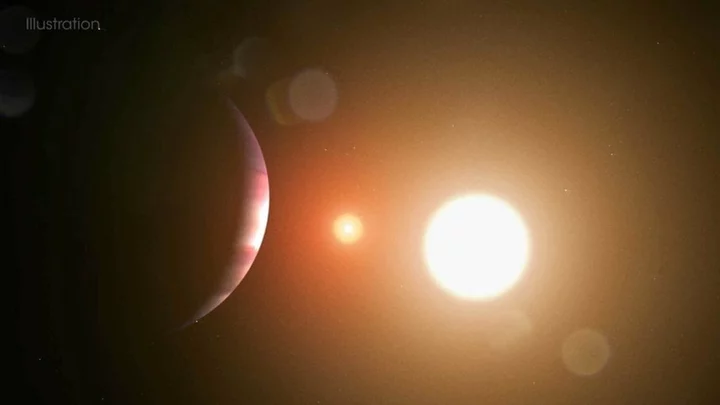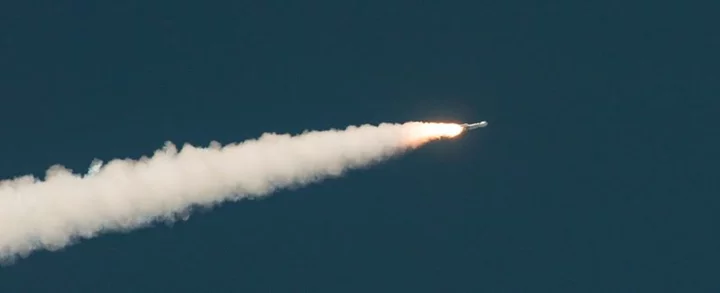Any Star Wars fan has an image burned into their minds of a young windswept Mark Hamill wearing a gi, gazing longingly at two sunsets.
Back in the 1970s when the first film came out, scientists weren't even sure if such a world existed. Today, astronomers know that while Luke Skywalker is space fantasy, worlds somewhat like his desert planet Tatooine are very real. Planet hunters don't even have to look beyond our own galaxy — far, far away — to find them.
An international research team just discovered a planet circling a couple of stars in what's known as a circumbinary solar system. The detection means another planet found orbiting this duo three years ago by a high school intern at NASA has company.
"Only 12 circumbinary systems are known so far, and this is only the second that hosts more than one planet," said David Martin, an astronomer at Ohio State University, in a statement.
SEE ALSO: Sorry Trekkies: Bad news about the 'real-life Planet Vulcan'Martin was among the team that recently published the finding in Nature Astronomy. Scientists didn't dub it Tatooine but gave it an arguably rad name as far as new planet monikers go. They're calling it BEBOP-1C, a tribute to the project that collected the data. BEBOP happens to stand for Binaries Escorted By Orbiting Planets.
More than half of all stars in the sky have one or more companion stars. These solar systems can differ widely. Some have large hot stars coupled with smaller cooler ones, or pairs in which one star cannibalizes the other. They don't just come in duos: There are also systems in the Milky Way galaxy with clutches of up to seven stars.
"Only 12 circumbinary systems are known so far, and this is only the second that hosts more than one planet."The Tatooine-like planet's year is 215 Earth days, and it's 65 times heavier than our planet, according to the study. Despite its imposing mass, BEBOP-1C is still roughly 20 percent the weight of Jupiter. Its two stars orbit each other every 15 days, according to NASA. One is about 10 percent more massive than the sun; the other is cooler, dimmer, and only one-third the mass of the sun.
Want more science and tech news delivered straight to your inbox? Sign up for Mashable's Light Speed newsletter today.
The planet, thought to be a gas giant like Uranus or Saturn, was found accidentally, 1,300 light-years away in the constellation Pictor. Scientists were trying to observe its sibling to learn its mass. Though they didn't achieve that, they found another planet farther away from the stars instead, using the radial velocity method, sometimes referred to as the "wobble method." The group said this new world makes history as the first exoplanet orbiting two stars found with this method.
The technique looks for subtle changes in starlight wavelengths. The gravitational tugs of orbiting planets cause their host stars to jitter, and planet hunters are adept at interpreting these slight "wobbles" in the data.
The planet, thought to be a gas giant like Uranus or Saturn, was found accidentally, 1,300 light-years away in the constellation Pictor. Credit: NASA's Goddard Space Flight Center / Chris SmithThough they weren't able to nail down the mass of the first planet found in the system, they know that it's some 22 times less than Earth's, while being nearly the size of Saturn. That would make the curious inner planet less dense than a sponge cake, said Matthew Standing, the lead author, who wasn't being glib. To make the comparison, he cited an advanced baking cookbook.
Scientists hope, with the James Webb Space Telescope, they'll be able to reveal more information about the planet's composition.
They'll also need to conduct follow-up research on BEBOP-1C and look for more sibling planets. Previous studies have suggested it's possible for worlds in circumbinary systems to be habitable. A paper published in Nature Communications in 2017 studied the question with computer models and concluded exoplanets orbiting binary stars could have water and sustain life if they were at the right distance, despite variations in the amount of light they'd receive from the stars.
Who knows? Maybe this real Tatooine has a lush Endor in its midst.









